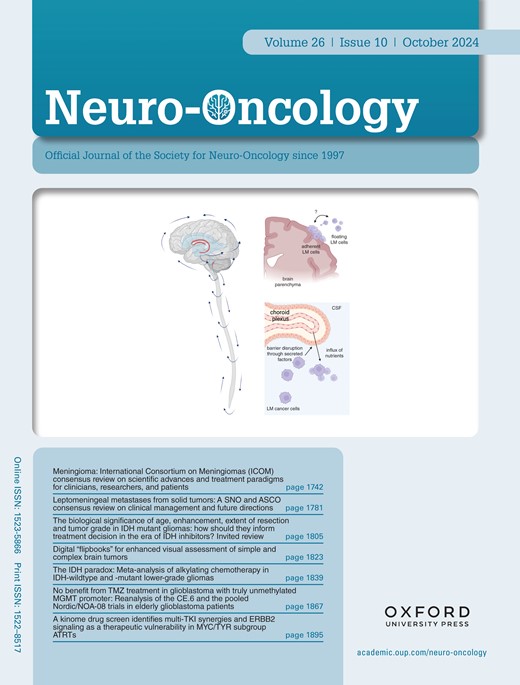
Hou, A.J., Shih, R.M., Uy, B.R., Shafer, A., Chang, Z.L., Comin-Anduix, B., Guesses, M., Galic, Z., Phyu, S., Okada, H., Grausam, K.B., Breunig, J.J., Brown, C.E., Nathanson, D.A., Prins, R.M., Chen Y.Y.
Neuro-oncology. 2024;26(10):1850-1866.
Fulltext Options
View on External Site https://academic.oup.com/neuro-oncology/advance-article/doi/10.1093/neuonc/noae126/7710147?utm_source=authortollfreelink&utm_campaign=neuro-oncology&utm_medium=email&guestAccessKey=29790723-f2cc-46da-9c66-0fb5363b3adfBackground: Chimeric antigen receptor (CAR)-T cell therapies targeting glioblastoma (GBM)-associated antigens such as interleukin-13 receptor subunit alpha-2 (IL-13Rα2) have achieved limited clinical efficacy to date, in part due to an immunosuppressive tumor microenvironment (TME) characterized by inhibitory molecules such as transforming growth factor-beta (TGF-β). The aim of this study was to engineer more potent GBM-targeting CAR-T cells by countering TGF-β–mediated immune suppression in the TME. Methods: We engineered a single-chain, bispecific CAR targeting IL-13Rα2 and TGF-β, which programs tumor-specific T cells to convert TGF-β from an immunosuppressant to an immunostimulant. Bispecific IL-13Rα2/TGF-β CAR-T cells were evaluated for efficacy and safety against both patient-derived GBM xenografts and syngeneic models of murine glioma. Results: Treatment with IL-13Rα2/TGF-β CAR-T cells leads to greater T-cell infiltration and reduced suppressive myeloid cell presence in the tumor-bearing brain compared to treatment with conventional IL-13Rα2 CAR-T cells, resulting in improved survival in both patient-derived GBM xenografts and syngeneic models of murine glioma. Conclusion: Our findings demonstrate that by reprogramming tumor-specific T-cell responses to TGF-β, bispecific IL-13Rα2/TGF-β CAR-T cells resist and remodel the immunosuppressive TME to drive potent anti-tumor responses in GBM.
BibTeX
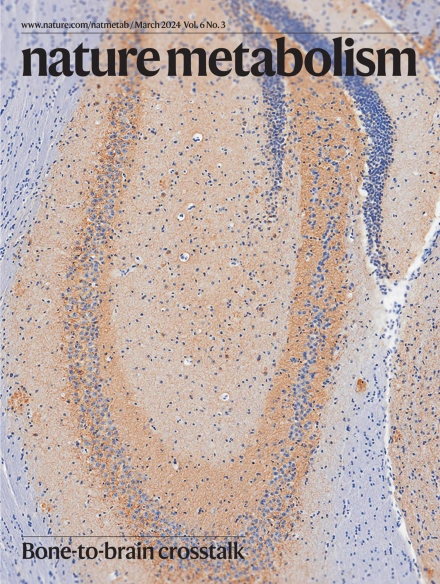
Lakhani, A., Chen, X., Chen, L.C., Hong, M., Khericha, M. Chen, Y., Chen Y.Y., Park, J.O.
Nature Metabolism. 2024:1143-1160.
Fulltext Options
View on External Site https://www.nature.com/articles/s42255-024-01034-7Metabolism is an indispensable part of T cell proliferation, activation and exhaustion, yet the metabolism of chimeric antigen receptor (CAR)-T cells remains incompletely understood. CARs are composed of extracellular domains—often single-chain variable fragments (scFvs)—that determine ligand specificity and intracellular domains that trigger signalling following antigen binding. Here, we show that CARs differing only in the scFv variously reprogramme T cell metabolism. Even without exposure to antigens, some CARs increase proliferation and nutrient uptake in T cells. Using stable isotope tracers and mass spectrometry, we observed basal metabolic fluxes through glycolysis doubling and amino acid uptake overtaking anaplerosis in CAR-T cells harbouring a rituximab scFv, unlike other similar anti-CD20 scFvs. Disparate rituximab and 14G2a-based anti-GD2 CAR-T cells are similarly hypermetabolic and channel excess nutrients to nitrogen overflow metabolism. Modest overflow metabolism of CAR-T cells and metabolic compatibility between cancer cells and CAR-T cells are identified as features of efficacious CAR-T cell therapy.
BibTeX
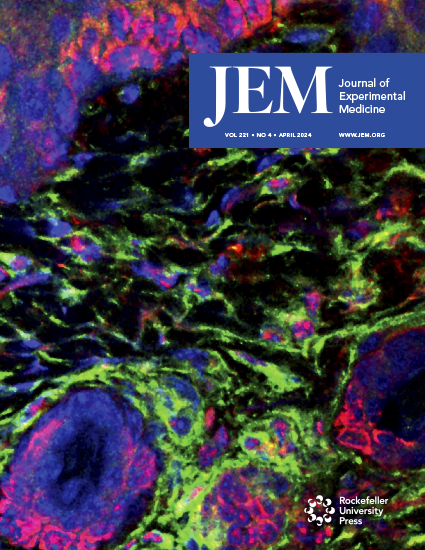
Lin, M.-Y., Nam, E., Shih, R.M., Shafer, A., Bouren, A., Ayala Ceja, M., Harris, C., Khericha, M., Vo, K.H., Kim, M., Tseng, C.-H., and Chen, Y.Y.
Journal of Experimental Medicine. 2024;221(6):e20221988.
Fulltext Options
View on External Site https://rupress.org/jem/article/221/6/e20221988/276696/Self-regulating-CAR-T-cells-modulate-cytokineCytokine release syndrome (CRS) is a frequently observed side effect of chimeric antigen receptor (CAR)-T cell therapy. Here, we report self-regulating T cells that reduce CRS severity by secreting inhibitors of cytokines associated with CRS. With a humanized NSG-SGM3 mouse model, we show reduced CRS-related toxicity in mice treated with CAR-T cells secreting tocilizumab-derived single-chain variable fragment (Toci), yielding a safety profile superior to that of single-dose systemic tocilizumab administration. Unexpectedly, Toci-secreting CD19 CAR-T cells exhibit superior in vivo anti-tumor efficacy compared to conventional CD19 CAR-T cells. scRNA-seq analysis of immune cells recovered from tumor-bearing humanized mice revealed treatment with Toci-secreting CD19 CAR-T cells enriches for cytotoxic T cells while retaining memory T-cell phenotype, suggesting Toci secretion not only reduces toxicity but also significantly alters the overall T-cell composition. This approach of engineering T cells to self-regulate inflammatory cytokine production is a clinically compatible strategy with the potential to simultaneously enhance safety and efficacy of CAR-T cell therapy for cancer.
BibTeX
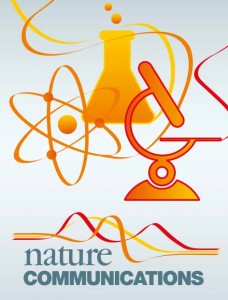
Jilani, S., Saco, J.D., Mugarza, E., ..., Chen, Y.Y., Ribas, A., and Puig-Saus, C.
Nature Communications. 2024:1244.
Fulltext Options
View on External Site https://www.nature.com/articles/s41467-024-45221-2A major limitation to developing chimeric antigen receptor (CAR)-T cell therapies for solid tumors is identifying surface proteins highly expressed in tumors but not in normal tissues. Here, we identify Tyrosinase Related Protein 1 (TYRP1) as a CAR-T cell therapy target to treat patients with cutaneous and rare melanoma subtypes unresponsive to immune checkpoint blockade. TYRP1 is primarily located intracellularly in the melanosomes, with a small fraction being trafficked to the cell surface via vesicular transport. We develop a highly sensitive CAR-T cell therapy that detects surface TYRP1 in tumor cells with high TYRP1 overexpression and presents antitumor activity in vitro and in vivo in murine and patient-derived cutaneous, acral and uveal melanoma models. Furthermore, no systemic or off-tumor severe toxicities are observed in an immunocompetent murine model. The efficacy and safety profile of the TYRP1 CAR-T cell therapy supports the ongoing preparation of a phase I clinical trial.
BibTeX
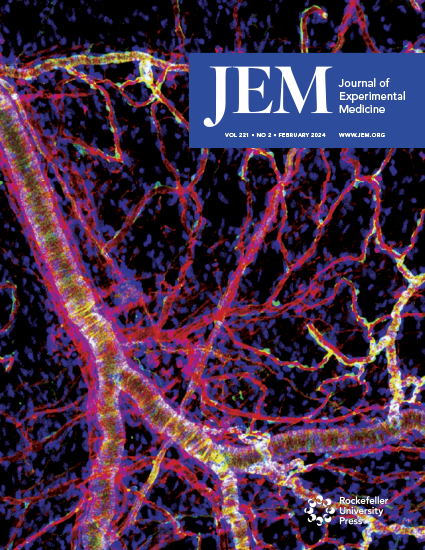
Ayala Ceja, M., Khericha, M., Harris, C.M., Puig-Saus, C., and Chen, Y.Y.
Journal of Experimental Medicine. 2024;221(2):e20230903.
Fulltext Options
View on External Site https://rupress.org/jem/article/221/2/e20230903/276499/CAR-T-cell-manufacturing-Major-process-parameters?searchresult=1Chimeric antigen receptor (CAR)-T cell therapies have demonstrated strong curative potential and become a critical component in the array of B-cell malignancy treatments. Successful deployment of CAR-T cell therapies to treat hematologic and solid cancers, as well as other indications such as autoimmune diseases, is dependent on effective CAR-T cell manufacturing that impacts not only product safety and efficacy, but also overall accessibility to patients in need. In this review, we discuss the major process parameters of autologous CAR-T cell manufacturing, as well as regulatory considerations and ongoing developments that will enable the next generation of CAR-T cell therapies.
BibTeX
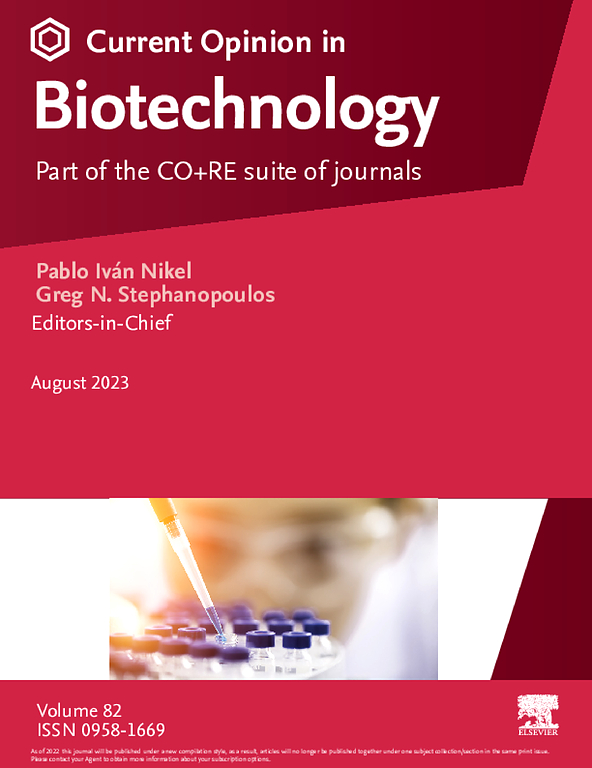
Hong, M., Talluri, S., and Chen, Y.Y.
Current Opinion in Biotechnology. 2023:103020.
Fulltext Options
View on External Site https://www.sciencedirect.com/science/article/pii/S0958166923001301T cells engineered to express chimeric antigen receptors (CARs) have demonstrated robust response rates in treating hematological malignancies. However, solid tumors present multiple challenges that hinder the antitumor efficacy of CAR-T cells, including antigen heterogeneity, off-tumor and systemic toxicities, and the immunosuppressive milieu of the tumor microenvironment (TME). Notably, the TME of solid tumors is characterized by chemokine dysregulation and a dense architecture consisting of tumor stroma, extracellular matrix, and aberrant vasculature that impede migration of CAR-T cells to the tumor site as well as infiltration into the solid-tumor mass. In this review, we highlight recent advances to improve CAR-T-cell trafficking to and infiltration of solid tumors to promote effective antigen recognition by CAR-T cells.
BibTeX
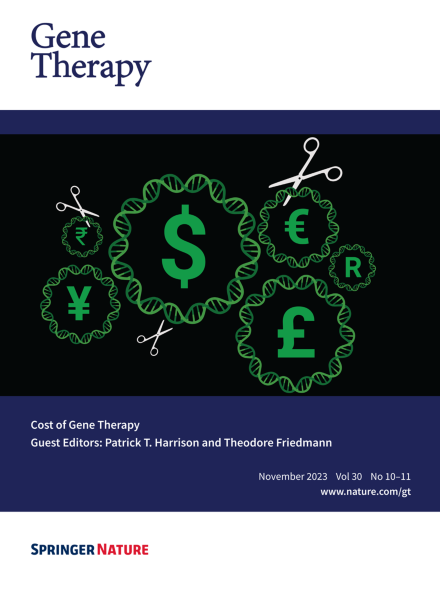
Kohn D.B., Chen, Y.Y., and M.J. Spencer
Gene Therapy. 2023:738-746.
Fulltext Options
View on External Site https://www.nature.com/articles/s41434-023-00390-5Despite the ups and downs in the field over three decades, the science of gene therapy has continued to advance and provide enduring treatments for increasing number of diseases. There are active clinical trials approaching a variety of inherited and acquired disorders of different organ systems. Approaches include ex vivo modification of hematologic stem cells (HSC), T lymphocytes and other immune cells, as well as in vivo delivery of genes or gene editing reagents to the relevant target cells by either local or systemic administration. In this article, we highlight success and ongoing challenges in three areas of high activity in gene therapy: inherited blood cell diseases by targeting hematopoietic stem cells, malignant disorders using immune effector cells genetically modified with chimeric antigen receptors, and ophthalmologic, neurologic, and coagulation disorders using in vivo administration of adeno-associated virus (AAV) vectors. In recent years, there have been true cures for many of these diseases, with sustained clinical benefit that exceed those from other medical approaches. Each of these treatments faces ongoing challenges, namely their high one-time costs and the complexity of manufacturing the therapeutic agents, which are biological viruses and cell products, at pharmacologic standards of quality and consistency. New models of reimbursement are needed to make these innovative treatments widely available to patients in need.
BibTeX
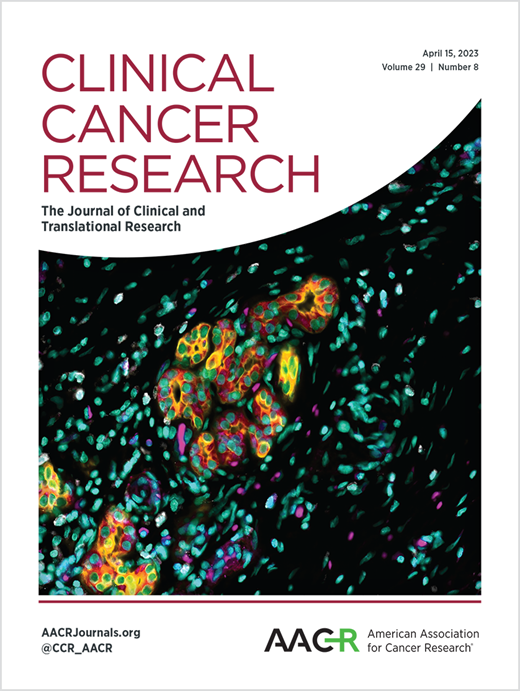
Clubb, J.D., Gao, T.A., and Chen, Y.Y.
Clinical Cancer Research. 2023;29(8):1390–1402.
Fulltext Options
View on External Site https://aacrjournals.org/clincancerres/article-abstract/doi/10.1158/1078-0432.CCR-22-1491/711672/Synthetic-Biology-in-the-Engineering-of-CAR-T-and?redirectedFrom=fulltextThe advent of modern synthetic-biology tools has enabled the development of cellular treatments with engineered specificity, leading to a new paradigm in anticancer immunotherapy. T cells have been at the forefront of such development, with six chimeric antigen receptor–modified T-cell products approved by the FDA for the treatment of hematologic malignancies in the last 5 years. Natural killer (NK) cells are innate lymphocytes with potent cytotoxic activities, and they have become an increasingly attractive alternative to T-cell therapies due to their potential for allogeneic, “off-the-shelf” applications. However, both T cells and NK cells face numerous challenges, including antigen escape, the immunosuppressive tumor microenvironment, and potential for severe toxicity. Many synthetic-biology strategies have been developed to address these obstacles, most commonly in the T-cell context. In this review, we discuss the array of strategies developed to date, their application in the NK-cell context, as well as opportunities and challenges for clinical translation.
BibTeX
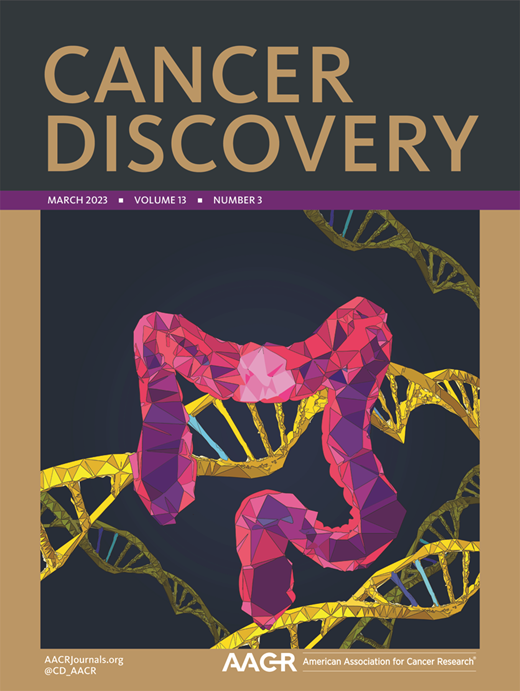
Larson, S.M., Walters, C.M., Ji, B., Ghafouri, S.N., Naparstek, J., Trent, J., Chen, J.M., Roshandell, M., Harris, C., Khericha, M., Schweppe, T., Berent-Maoz, B., Gosliner, S.B., Almaktari, A., Ayala Ceja, M., Allen-Auerbach, M.S., Said, J., Nasally, K., Mead, M., de Vos, S., Young, P.A., Oliai, C., Schiller, G.J., Timmerman, J.M., Ribas, A., and Chen, Y.Y.
Cancer Discovery. 2023;13(3):580-597.
Fulltext Options
View on External Site https://aacrjournals.org/cancerdiscovery/article/doi/10.1158/2159-8290.CD-22-0964/711150/CD19-CD20-Bispecific-Chimeric-Antigen-Receptor-CARTo address antigen escape and loss of T-cell functionality, we report a phase-1 clinical trial (NCT04007029) evaluating autologous naïve and memory T (TN/MEM) cells engineered to express a bispecific anti-CD19/CD20 CAR (CART19/20) for patients with relapsed/refractory NHL, with safety as the primary end point. Ten patients were treated with 36–165 x 106 CART19/20 cells. No patient experienced neurotoxicity of any grade, or over grade-1 cytokine release syndrome. One case of dose-limiting toxicity (persistent cytopenia) was observed. Nine of ten patients achieved objective response (90% ORR), with seven achieving complete remission (70% CR rate). One patient relapsed after 18 months in CR, but returned to CR after receiving a second dose of CART19/20 cells. Median progression-free survival and overall survival were not reached with a 17-month median follow-up. In conclusion, CART19/20 TN/MEM cells are safe and effective in patients with relapsed/refractory NHL, with durable responses achieved at low dosage levels.
BibTeX
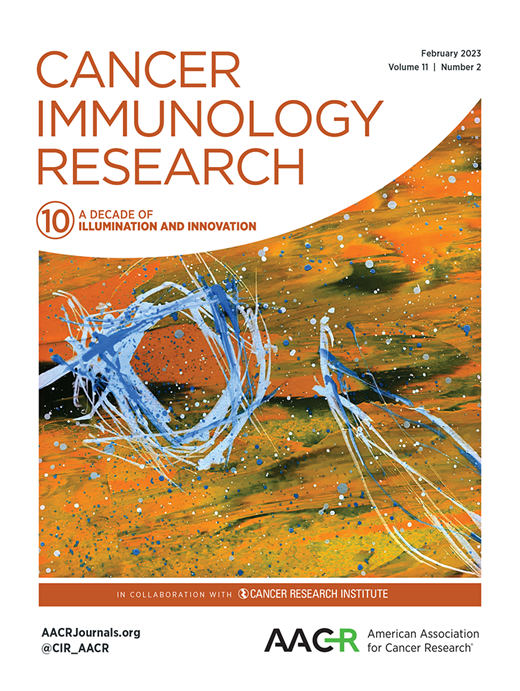
Chen, X., Chen, L.C., Khericha, M., Meng, X., Salvetrini, E., Shafer, A., Iyer, N., Alag, A.S., Ding, Y., Nicolaou, D.M., and Chen, Y.Y.
Cancer Immunology Research. 2023;11(2):150-163.
Fulltext Options
View on External Site https://aacrjournals.org/cancerimmunolres/article/doi/10.1158/2326-6066.CIR-22-0504/711107/Rational-protein-design-yields-a-CD20-CAR-withChimeric antigen receptors (CARs) are fusion proteins whose functional domains are often connected in a plug-and-play manner to generate multiple CAR variants. However, CARs with highly similar sequences can exhibit dramatic differences in function. Thus, approaches to rationally optimize CAR proteins are critical to the development of effective CAR T-cell therapies. Here, we report that as few as two amino-acid changes in non-signaling domains of a CAR were able to significantly enhance in vivo antitumor efficacy. We demonstrate juxtamembrane alanine insertion and single-chain variable fragment (scFv) sequence hybridization as two strategies that could be combined to maximize CAR functionality, and describe a CD20 CAR that outperformed the CD19 CAR in antitumor efficacy in preclinical in vitro and in vivo assays. Precise changes in the CAR sequence drove dramatically different transcriptomic profiles upon antigen stimulation, with the most efficacious CAR inducing an enrichment in highly functional memory T cells upon antigen stimulation. These findings underscore the importance of sequence-level optimization to CAR-T cell function, and the protein-engineering strategy described here may be applied to the development of additional CARs against diverse antigens.
BibTeX
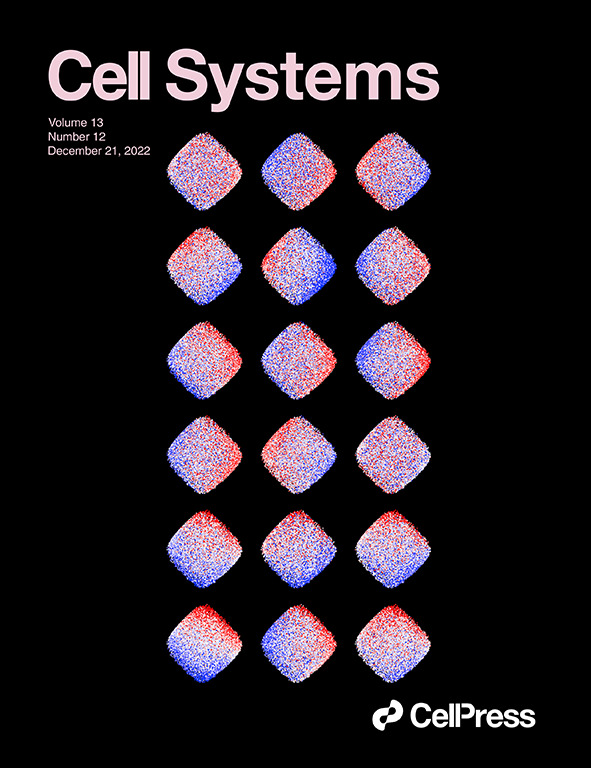
Cabera, A., Edelstein, H.I., Glykofrydis, F., ..., Chen, Y.Y.,...Deans, T.L.
Cell Systems. 2022;13(12):950–973.
Fulltext Options
View on External Site https://authors.elsevier.com/sd/article/S2405-4712(22)00464-1To elucidate principles operating in native biological systems and to develop novel biotechnologies, synthetic biology aims to build and integrate synthetic gene circuits within native transcriptional networks. The utility of synthetic gene circuits for cell engineering relies on the ability to control the expression of all constituent transgene components. Transgene silencing, defined as the loss of expression over time, persists as an obstacle for engineering primary cells and stem cells with transgenic cargos. In this review, we highlight the challenge that transgene silencing poses to the robust engineering of mammalian cells, outline potential molecular mechanisms of silencing, and present approaches for preventing transgene silencing. We conclude with a perspective identifying future research directions for improving the performance of synthetic gene circuits.
BibTeX
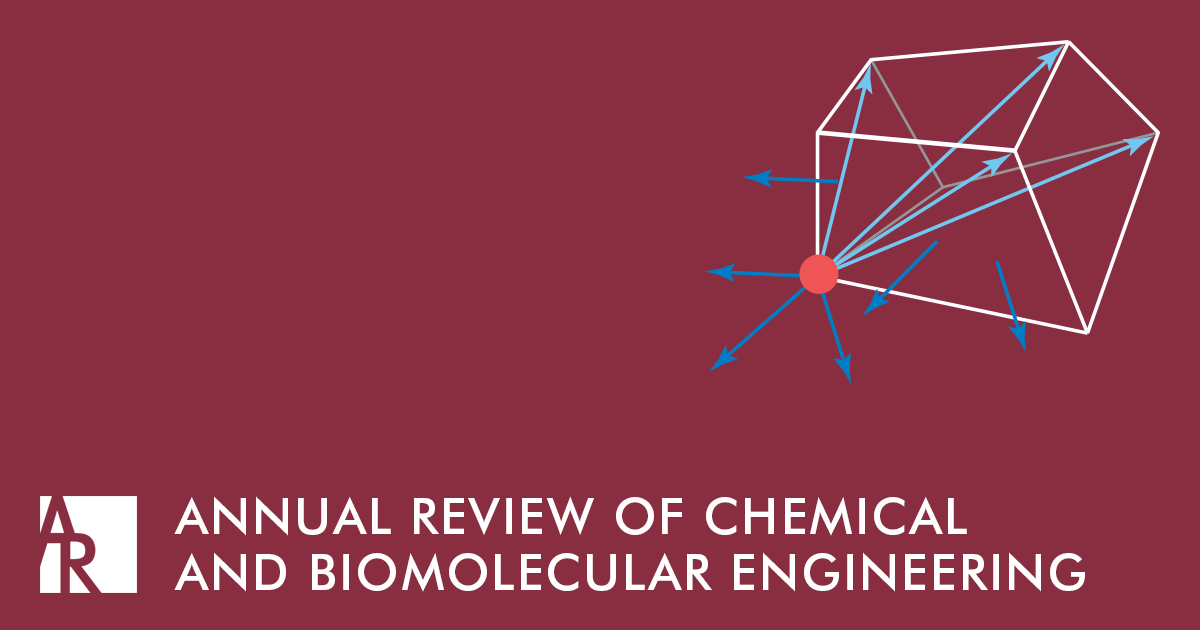
Gao, T.A. and Chen, Y.Y.
Annual Reviews of Chemical and Biomolecular Engineering. 2022:193–216.
Fulltext Options
View on External Site https://www.annualreviews.org/doi/abs/10.1146/annurev-chembioeng-092120-092914T cells engineered to express chimeric antigen receptors (CARs) have shown remarkable success in treating B-cell malignancies, reflected by multiple US Food and Drug Administration–approved CAR-T cell products currently on the market. However, various obstacles have thus far limited the use of approved products and constrained the efficacy of CAR-T cell therapy against solid tumors. Overcoming these obstacles will necessitate multidimensional CAR-T cell engineering approaches and better understanding of the intricate tumor microenvironment (TME). Key challenges include treatment-related toxicity, antigen escape and heterogeneity, and the highly immunosuppressive profile of the TME. Notably, the hypoxic and nutrient-deprived nature of the TME severely attenuates CAR-T cell fitness and efficacy, highlighting the need for more sophisticated engineering strategies. In this review, we examine recent advances in protein- and cell-engineering strategies to improve CAR-T cell safety and efficacy, with an emphasis on overcoming immunosuppression induced by tumor metabolism and hypoxia.
BibTeX
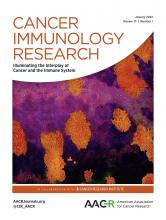
Shih, R.M. and Chen, Y.Y.
Cancer Immunology Research. 2022;10(1):6–11.
Fulltext Options
View on External Site https://aacrjournals.org/cancerimmunolres/article/10/1/6/674674/Engineering-Principles-for-Synthetic-BiologyRecent advances in biomolecular engineering have led to novel cancer immunotherapies with sophisticated programmed functions, including chimeric antigen receptor (CAR)-T cells that bind tumor-associated antigens (TAAs) to direct coordinated immune responses. Extensive engineering efforts have been made to program not only CAR specificity, but also downstream pathways that activate molecular responses. Collectively, these efforts can be conceptualized as an immunotherapy circuit: TAAs bind the CAR as input signals; intracellular signaling cascades process the binding interactions into transcriptional and translational events; and those events program effector output functions. More simply, this sequence may be abstracted as input, processing, and output. This review examines the increasingly complex scene of synthetic-biology solutions in cancer immunotherapy and summarizes recent work within the framework of immunotherapy circuits. In doing so, a toolbox of basic modular circuits may be established as a foundation upon which sophisticated solutions may be constructed to meet more complex problems.
BibTeX

Gao, T.A. and Chen, Y.Y.
Science. 2022;375(6576):23-24.
Fulltext Options
View on External Site https://www.science.org/doi/10.1126/science.abn0851Fibrosis that results from excessive extracellular matrix protein deposition by activated cardiac fibroblasts is a hallmark of heart disease and plays a critical role in disease progression to heart failure (1). However, therapies targeting this cardiac fibrosis remain limited. On page 91 of this issue, Rurik et al. describe a new approach to eliminate activated fibroblasts by harnessing the power of engineered T cells. Lipid nanoparticles (LNPs) carrying messenger RNA (mRNA) that encodes a chimeric antigen receptor (CAR) are used to generate CAR T cells in mice, yielding a therapeutic T cell population that is capable of ablating pathogenically activated fibroblasts and attenuating cardiac fibrosis.
BibTeX
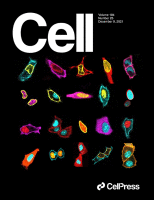
Hong, M. and Chen, Y.Y.
Cell. 2021;184(25):6017–6019.
Fulltext Options
View on External Site https://www.sciencedirect.com/science/article/pii/S0092867421013301Exhaustion of chimeric antigen receptor (CAR)-T cells hinders their therapeutic efficacy, especially in treating solid tumors. In this issue of Cell, Good et al. develop an in vitro model of antigen-driven CAR-T cell exhaustion to characterize signatures of dysfunction, including a transition to a natural killer (NK)-like phenotype, and suggest new gene targets to prevent exhaustion.
BibTeX

Chen, L.C. and Chen, Y.Y.
Nature. 2021;598(7882):570–571.
Fulltext Options
View on External Site https://www.nature.com/articles/d41586-021-02639-8Key nutrients that are needed by immune cells are scarce in tumours. Engineered cancer-invading bacteria can recycle tumour waste into metabolic fuel to boost anticancer immune responses in mice.
BibTeX
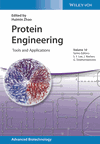
Hou, A.J. and Chen, Y.Y.
Protein Engineering: Tools and Applications. 2021:353–375.
Fulltext Options
View on External Site https://onlinelibrary.wiley.com/doi/abs/10.1002/9783527815128.ch14The adoptive transfer of T cells expressing chimeric antigen receptors (CARs) that target tumor antigens is a highly promising immunotherapy with untapped potential to treat a vast array of cancer types. However, despite remarkable success against B-cell malignancies, clinical outcomes of CAR-T cell therapy against other cancer types have been underwhelming, warranting ongoing research efforts to engineer CARs with optimal antitumor function. Owing to their modularity, CARs can easily be tuned with different target specificities and signaling properties, making CAR engineering highly amenable to design–build–test cycles. Here, we present an overview of each CAR component and their known contributions to CAR function, synthesizing a set of design principles to guide rational engineering efforts for optimal therapeutic efficacy.
BibTeX
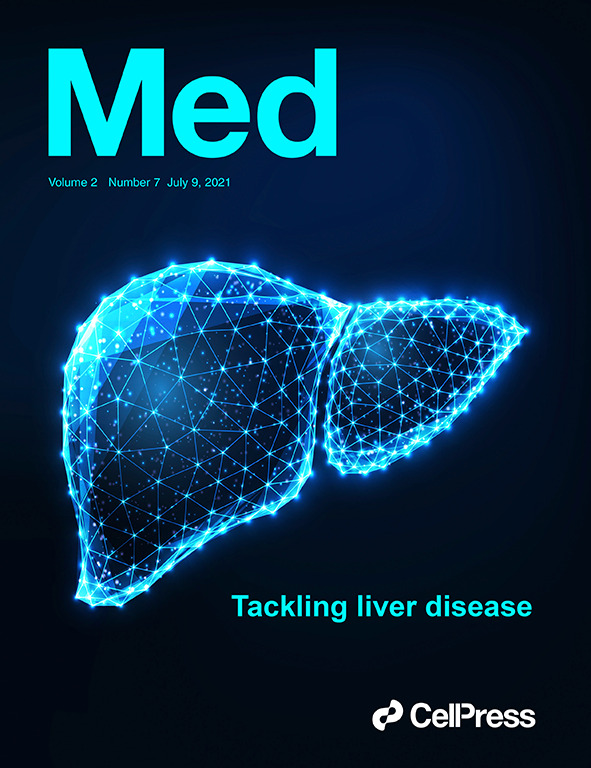
Chen, L.C., Hou, A.J., and Chen, Y.Y.
Med. 2021;2(7):785-787.
Fulltext Options
View on External Site https://www.cell.com/med/fulltext/S2666-6340(21)00233-6Although remarkably successful against liquid tumors, chimeric antigen receptor (CAR)-T cell therapy has been stymied by solid tumors, limited by inadequate specificity and poor efficacy. Pairing synthetic Notch (synNotch) receptors with CARs, Choe et al. and Hyrenius-Wittsten et al. engineer T cells that more precisely and potently combat solid tumors.
BibTeX
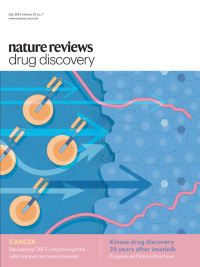
Hou, A.J., Chen, L.C., and Chen, Y.Y.
Nature Reviews Drug Discovery. 2021;20(7):531-550.
Fulltext Options
View on External Site https://www.nature.com/articles/s41573-021-00189-2The adoptive transfer of T cells that are engineered to express chimeric antigen receptors (CARs) has shown remarkable success in treating B-cell malignancies but only limited efficacy against other cancer types, especially solid tumours. Compared with haematological diseases, solid tumours present a unique set of challenges, including a lack of robustly expressed, tumour exclusive antigen targets as well as highly immunosuppressive and metabolically challenging tumour microenvironments, that limit treatment safety and efficacy. Here, we review protein- and cell-engineering strategies that seek to overcome these obstacles and produce next-generation T cells with enhanced tumour-specificity and sustained effector function for the treatment of solid malignancies.
BibTeX
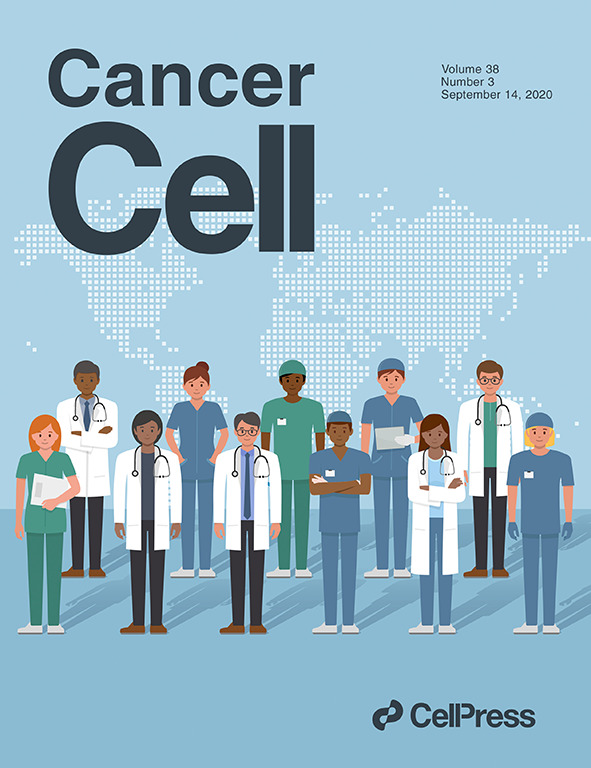
Hong, M., Clubb, J.D. and Chen, Y.Y.
Cancer Cell. 2020;38(4):473–488.
Fulltext Options
View on External Site https://www.cell.com/cancer-cell/fulltext/S1535-6108(20)30366-4T cells engineered to express chimeric antigen receptors (CARs) with tumor specificity have shown remarkable success in treating patients with hematologic malignancies and revitalized the field of adoptive cell therapy. However, realizing broader therapeutic applications of CAR-T cells necessitates engineering approaches on multiple levels to enhance efficacy and safety. Particularly, solid tumors present unique challenges due to the biological complexity of the solid-tumor microenvironment (TME). In this Review, we highlight recent strategies to improve CAR-T cell therapy by engineering (1) the CAR protein, (2) T cells, and (3) the interaction between T cells and other components in the TME.
BibTeX
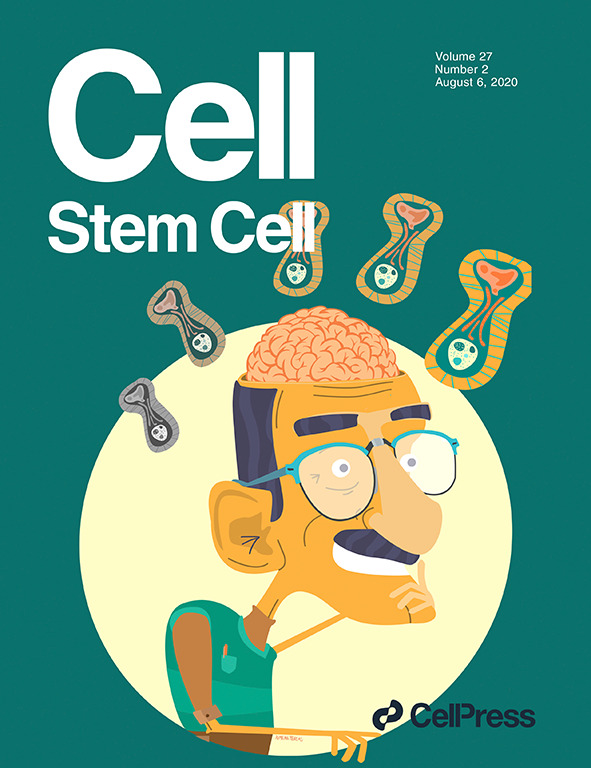
Li, J.H. and Chen, Y.Y.
Cell Stem Cell. 2020;27(2):192–194.
Fulltext Options
View on External Site https://www.cell.com/cell-stem-cell/fulltext/S1934-5909(20)30348-9Senescence is a critical factor in several diseases, yet senolytic therapies targeting senescent cells remain hindered by lack of specificity. In the June issue of Nature, Amor et al. (2020) develop chimeric antigen receptor (CAR)-T cells targeting uPAR, a novel senescent-cell marker, to treat liver adenocarcinoma and liver fibrosis.
BibTeX

Zah, E., Nam, E., Bhuvan, V., Tran, U., Ji, B.Y., Gosliner, S.B., Wang, X., Brown, C.E., and Chen, Y.Y.
Nature Communications. 2020:2283.
Fulltext Options
View on External Site https://www.nature.com/articles/s41467-020-16160-5Chimeric antigen receptor (CAR)-T cell therapy has shown remarkable clinical efficacy against B-cell malignancies, yet marked vulnerability to antigen escape and tumor relapse exists. Here we report the rational design and optimization of bispecific CAR-T cells with robust activity against heterogeneous multiple myeloma (MM) that is resistant to conventional CAR-T cell therapy targeting B-cell maturation antigen (BCMA). We demonstrate that BCMA/CS1 bispecific CAR-T cells exhibit superior CAR expression and function compared to T cells that co-express individual BCMA and CS1 CARs. Combination therapy with anti–PD-1 antibody further accelerates the rate of initial tumor clearance in vivo, while CAR-T cell treatment alone achieves durable tumor-free survival even upon tumor re-challenge. Taken together, the BCMA/CS1 bispecific CAR presents a promising treatment approach to prevent antigen escape in CAR-T cell therapy against MM, and the vertically integrated optimization process can be used to develop robust cell-based therapy against novel disease targets.
BibTeX

Chang, Z.L., Hou, A.J., and Chen, Y.Y.
Nature Protocols. 2020:1507–1524.
Fulltext Options
View on External Site https://rdcu.be/b2dBOThe expression of synthetic receptors in primary T cells enables the programming of user-defined responses when designing T-cell therapies. Chimeric antigen receptors (CARs) are synthetic receptors that have demonstrated efficacy in cancer therapy by targeting immobilized antigens on the surface of malignant cells. We have recently shown they can also rewire T-cell responses to soluble ligands. In contrast to other synthetic receptors, CARs are not only readily engineered by rational design, but also clinically translatable with robust function in primary human T cells. This protocol discusses design principles for CARs responsive to soluble ligands and delineates steps for producing T cells expressing synthetic receptors. Functional assays for quantifying the ability of CAR-T cells to sense and respond to soluble ligands are also presented. This protocol provides a framework for proficient immune-cell researchers to test novel T-cell therapies targeting soluble ligands in under two weeks.
BibTeX
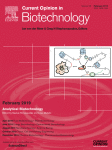
Chen, L.C. and Chen, Y.Y.
Current Opinion in Biotechnology. 2019:111-118.
Fulltext Options
View on External Site https://www.sciencedirect.com/science/article/pii/S0958166918301393?dgcid=authorAdoptive T-cell therapy has shown remarkable clinical efficacy in treating refractory hematological cancers. However, challenges presented by solid tumors impede the applicability of adoptive T-cell therapy to the majority of cancers. In order to engineer effective T-cell therapies targeting solid tumors, two synergistic design criteria—T-cell therapeutic programs and anti-tumor T-cell chassis—should be taken into consideration. Recent advances in synthetic biology have enabled genetic programming of therapeutic sense-and-respond modalities in T cells. Furthermore, systems-level integration of multi-omics data have allowed researchers to holistically profile robust anti-tumor T-cell populations. In this review, we feature novel strategies that can be incorporated into adoptive T-cell therapy design–ushering in a new paradigm of solid tumor treatment options.
BibTeX

Chen, Y.Y. and Van Deventer, J.A.
Current Opinion in Biotechnology. 2019:iii-v.
Fulltext Options
View on External Site https://www.sciencedirect.com/science/article/abs/pii/S0958166919300977?via%3DihubBibTeX

Hou, A.J.*, Chang, Z.L.*, Lorenzini, M.H., Zah, E., and Chen, Y.Y.
Bioengineering and Translational Medicine. 2018:85-86.
Fulltext Options
View on External Site http://dx.doi.org/10.1002/btm2.10097A new class of chimeric antigen receptors (CARs) that respond to soluble antigens was recently demonstrated, enabling the engineering of T cells that convert transforming growth factor beta (TGF-β) from an immunosuppressive cytokine to a potent T-cell stimulant. However, clinical translation of TGF-β CAR-T cells for cancer therapy requires the ability to productively combine TGF-β responsiveness with tumor-targeting specificity. Furthermore, it remains unclear whether contaminating, TGF-β–producing regulatory T (Treg) cells in TGF-β CAR-transduced cell products may preferentially expand during T-cell manufacturing and lead to unwanted suppression of effector T (Teff) cells. Here, we explore the effect of TGF-β CAR-T cells on the anti-tumor activity of Teff cells and the suppressive function of Treg cells. Our results demonstrate that TGF-β CAR-T cells have the potential to significantly improve the anti-tumor efficacy of neighboring cytotoxic T cells while protecting naïve T cells from developing the Treg phenotype in the presence of TGF-β. We further demonstrate that the introduction of TGF-β CARs into mixed Teff and Treg cell populations does not result in the preferential expansion of Treg cells even in the presence of TGF-β, and that TGF-β CAR-Treg cells do not cause CAR-mediated suppression of Teff cells. These results support the utility of incorporating TGF-β CARs in the development of adoptive T-cell therapy for cancer.
BibTeX

Chen, Y.Y.
Cell. 2018;173(6):1316-1317.
Fulltext Options
View on External Site https://authors.elsevier.com/a/1X8ZRL7PXUhTrChimeric antigen receptor (CAR) T cells offer a promising treatment option for advanced cancers resistant to standard therapy. Here, Cho et al. report a split-CAR design that enables the engineering of multi-feature CAR-T cells, aiming to address current challenges limiting the safety and efficacy of CAR-T cells for cancer treatment.
BibTeX

Ho, P. and Chen, Y.Y.
Wiley Biotechnology Series--Synthetic Biology: Parts, Devices, and Applications. 2018:849-372.
Fulltext Options
View on External Site https://onlinelibrary.wiley.com/doi/abs/10.1002/9783527688104.ch17In response to the changing landscape of medical challenges, pioneers in molecular biology and genetic engineering launched a new paradigm of pharmaceutical development. Unlike chemical pharmaceuticals and biologics, cellular therapeutics have the potential to establish prolonged proliferation in the patient and provide continual surveillance against disease relapse without repeated drug administration. This chapter discusses some of the challenges facing cell‐based therapeutics ‐ particularly cell‐based immunotherapies ‐ and highlights solutions that have been developed through the application of synthetic biology. Genetically engineered stem cells have been programmed to deliver cytotoxic molecules, angiostatic factors, and immunostimulatory cytokines to tumor cells, demonstrating the versatility and programmability of living cells as therapeutic agents. The ability to efficiently design, construct, and optimize synthetic biological systems that modify and/or interface with living cells is expanding new possibilities in the development of cellular therapeutics and offering enticing views of next generation strategies for disease treatment.
BibTeX
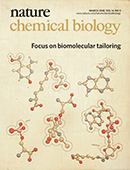
Chang, Z.L., Lorenzini, M.H., Chen, X., Tran, U., Bangayan, N.J., and Chen, Y.Y.
Nature Chemical Biology. 2018;14(3):317-324.
Fulltext Options
View on External Site http://rdcu.be/FO6aChimeric antigen receptor (CAR)-expressing T cells targeting surface-bound tumor antigens have yielded promising clinical outcomes, with two CD19 CAR-T cell therapies recently receiving FDA approval for the treatment of B-cell malignancies. The adoption of CARs for the recognition of soluble ligands, a distinct class of biomarkers in physiology and disease, could significantly broaden the utility of CARs in disease treatment. In this study, we demonstrate that CAR-T cells can be engineered to respond robustly to diverse soluble ligands, including CD19 ectodomain, GFP variants, and transforming growth factor beta (TGF-β). We additionally show that CAR signaling in response to soluble ligands relies on ligand-mediated CAR dimerization, and that CAR responsiveness to soluble ligands can be fine-tuned by adjusting the mechanical coupling between the CAR’s ligand-binding and signaling domains. Our results support a role for mechanotransduction in CAR signaling and demonstrate an approach to systematically engineer immune-cell responses to soluble, extracellular ligands.
BibTeX
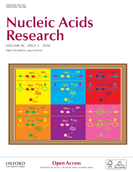
Wong, R.S., Chen, Y.Y., and Smolke, C.D.
Nucleic Acids Research. 2018:1541-1552.
Fulltext Options
View on External Site https://academic.oup.com/nar/advance-article/doi/10.1093/nar/gkx1228/4734798As molecular and cellular therapies advance in the clinic, the role of genetic regulation is becoming increasingly important for controlling therapeutic potency and safety. The emerging field of mammalian synthetic biology provides promising tools for the construction of regulatory platforms that can intervene with endogenous pathways and control cell behavior. Recent work has highlighted the development of synthetic biological systems that integrate sensing of molecular signals to regulated therapeutic function in various disease settings. However, the toxicity and limited dosing of currently available molecular inducers have largely inhibited translation to clinical settings. In this work, we developed synthetic microRNA-based genetic systems that are controlled by the pharmaceutical drug leucovorin, which is readily available and safe for prolonged administration in clinical settings. We designed microRNA switches to target endogenous cytokine receptor subunits (IL-2Rβ and γc) that mediate various signaling pathways in T cells. We demonstrate the function of these control systems by effectively regulating T cell proliferation with the drug input. Each control system produced unique functional responses, and combinatorial targeting of multiple receptor subunits exhibited greater repression of cell growth. This work highlights the potential use of drug-responsive genetic control systems to improve the management and safety of cellular therapeutics.
BibTeX
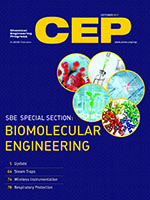
Zah, E. and Chen, Y.Y.
Chemical Engineering Progress. 2017 Oct:40-46.
Fulltext Options
View on External Site https://www.aiche.org/resources/publications/cep/2017/october/engineering-cancer-fighting-t-cellsAdoptive T-cell therapy is a personalized cancer treatment that has the potential to cure previously untreatable malignancies. Researchers are applying techniques in biomolecular engineering and synthetic biology to the development of next-generation therapeutic T cells with improved safety and efficacy against a variety of cancers.
BibTeX
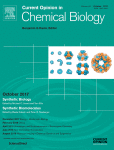
Ho, P. and Chen, Y.Y.
Current Opinion in Chemical Biology. 2017:57-64.
Fulltext Options
View on External Site http://www.sciencedirect.com/science/article/pii/S1367593117300091The recent expansion of molecular tool kits has propelled synthetic biology toward the design of increasingly sophisticated mammalian systems. Specifically, advances in genome editing, protein engineering, and circuitry design have enabled the programming of cells for diverse applications, including regenerative medicine and cancer immunotherapy. The ease with which molecular and cellular interactions can be harnessed promises to yield novel approaches to elucidate genetic interactions, program cellular functions, and design therapeutic interventions. Here, we review recent advancements in the development of enabling technologies and the practical applications of mammalian synthetic biology.
BibTeX
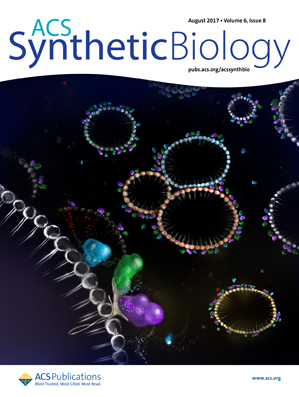
Ho, P., Ede, C., and Chen, Y.Y.
ACS Synthetic Biology. 2017;6(8):1484-1495.
Fulltext Options
View on External Site http://pubs.acs.org/doi/abs/10.1021/acssynbio.6b00392Targeted therapies promise to increase the safety and efficacy of treatments against diseases ranging from cancer to viral infections. However, the vast majority of targeted therapeutics relies on the recognition of extracellular biomarkers, which are rarely restricted to diseased cells and are thus prone to severe and sometimes-fatal off-target toxicities. In contrast, intracellular antigens present a diverse yet underutilized repertoire of disease markers. Here, we report a protein-based therapeutic platform-termed Cytoplasmic Oncoprotein VErifier and Response Trigger (COVERT)-which enables the interrogation of intracellular proteases to trigger targeted cytotoxicity. COVERT molecules consist of the cytotoxic protein granzyme B (GrB) fused to an inhibitory N-terminal peptide, which can be removed by researcher-specified proteases to activate GrB function. We demonstrate that fusion of a small ubiquitin-like modifier 1 (SUMO1) protein to GrB yields a SUMO-GrB molecule that is specifically activated by the cancer-associated sentrin-specific protease 1 (SENP1). SUMO-GrB selectively triggers apoptotic phenotypes in HEK293T cells that overexpress SENP1, and it is highly sensitive to different SENP1 levels across cell lines. We further demonstrate the rational design of additional COVERT molecules responsive to enterokinase (EK) and tobacco etch virus protease (TEVp), highlighting the COVERT platform's modularity and adaptability to diverse protease targets. As an initial step toward engineering COVERT-T cells for adoptive T-cell therapy, we verified that primary human T cells can express, package, traffic, and deliver engineered GrB molecules in response to antigen stimulation. Our findings set the foundation for future intracellular-antigen-responsive therapeutics that can complement surface-targeted therapies.
BibTeX
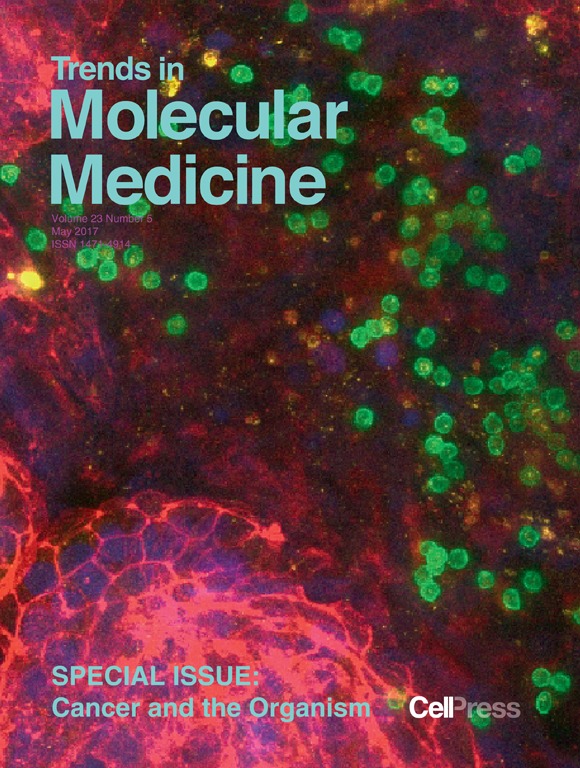
Chang, Z.L. and Chen, Y.Y.
Trends in Molecular Medicine. 2017;23(5):430-450.
Fulltext Options
View on External Site http://www.cell.com/trends/molecular-medicine/abstract/S1471-4914(17)30040-0?_returnURL=http%3A%2F%2Flinkinghub.elsevier.com%2Fretrieve%2Fpii%2FS1471491417300400%3Fshowall%3DtrueChimeric antigen receptors (CARs) are versatile synthetic receptors that provide T cells with engineered specificity. Clinical success in treating B-cell malignancies has demonstrated the therapeutic potential of CAR-T cells against cancer, and efforts are underway to expand the use of engineered T cells to the treatment of diverse medical conditions, including infections and autoimmune diseases. Here, we review current understanding of the molecular properties of CARs, how this knowledge informs the rational design and characterization of novel receptors, the successes and shortcomings of CAR-T cells in the clinic, and emerging solutions for the continued improvement of CAR-T cell therapy.
BibTeX
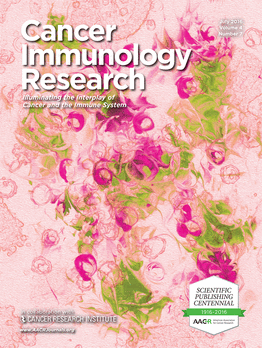
Zah, E., Lin, M.Y., Silva-Benedict, A., Jensen, M.C., Chen, Y.Y.
Cancer Immunology Research. 2016;4(7):639-641.
Fulltext Options
View on External Site http://cancerimmunolres.aacrjournals.org/content/4/6/498.longIn the June 2016 issue of Cancer Immunology Research, we reported the design and optimization of bispecific, OR-gate chimeric antigen receptors (CARs) that can trigger robust T-cell activation in response to target cells that present either CD19 or CD20 (1), thus preventing malignant B cells from escaping T-cell therapy through loss of CD19 expression. In our original study, although OR-gate CAR T cells could significantly delay tumor expansion and prolonged survival, tumors were not eradicated. Tumor persistence was not due to the loss of both CD19 and CD20 antigens, nor due to the inability of the adoptively transferred T cells to survive or expand in vivo. We concluded that the failure to eradicate tumors was due to suboptimal tumor or T-cell dosing and/or the aggressiveness of the Raji tumor model. As the Raji tumor model had been used in other studies at dosages comparable with those employed in our own experiments, complete tumor clearance should be possible in this xenograft model using adoptively transferred CAR T cells. Here, we report follow-up studies showing that the viability levels of CAR T cells, both immediately after thawing and after 1-2 days of in vitro culture, are an important indicator of the CAR T cells' antitumor capability in vivo. Healthy T cells with OR-gate CARs could efficiently eradicate established lymphoma xenografts even if the lymphoma cells had spontaneously lost CD19 expression, whereas single-input CD19 CAR T cells succumbed to the selective expansion of CD19- mutants.
BibTeX
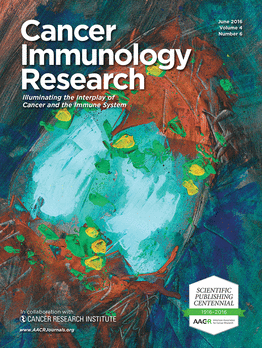
Zah, E., Lin, M.Y., Silva-Benedict, A., Jensen, M.C., Chen, Y.Y.
Cancer Immunology Research. 2016;4(6):498-508.
Fulltext Options
View on External Site http://cancerimmunolres.aacrjournals.org/content/4/6/498.longThe adoptive transfer of T cells expressing anti-CD19 chimeric antigen receptors (CARs) has shown remarkable curative potential against advanced B-cell malignancies, but multiple trials have also reported patient relapses due to the emergence of CD19-negative leukemic cells. Here, we report the design and optimization of single-chain, bi-specific CARs that trigger robust cytotoxicity against target cells expressing either CD19 or CD20, two clinically validated targets for B-cell malignancies. We determined the structural parameters required for efficient dual-antigen recognition, and we demonstrate that optimized bi-specific CARs can control both wild-type B-cell lymphoma and CD19- mutants with equal efficiency in vivo. To our knowledge, this is the first bi-specific CAR capable of preventing antigen escape by performing true OR-gate signal computation on a clinically relevant pair of tumor-associated antigens. The CD19-OR-CD20 CAR is fully compatible with existing T-cell manufacturing procedures and implementable by current clinical protocols. These results present an effective solution to the challenge of antigen escape in CD19 CAR T-cell therapy, and they highlight the utility of structure-based rational design in the development of receptors with higher-level complexity.
BibTeX
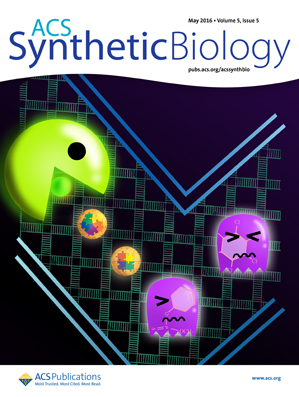
Ede, C., Chen, X., Lin, M.Y., Chen, Y.Y.
ACS Synthetic Biology. 2016;5(5):395-404.
Fulltext Options
View on External Site http://pubs.acs.org/doi/abs/10.1021/acssynbio.5b00266Inducible transcription systems play a crucial role in a wide array of synthetic biology circuits. However, the majority of inducible promoters are constructed from a limited set of tried-and-true promoter parts, which are susceptible to common shortcomings such as high basal expression levels (i.e., leakiness). To expand the toolbox for regulated mammalian gene expression and facilitate the construction of mammalian genetic circuits with precise functionality, we quantitatively characterized a panel of eight core promoters, including sequences with mammalian, viral, and synthetic origins. We demonstrate that this selection of core promoters can provide a wide range of basal gene expression levels and achieve a gradient of fold-inductions spanning 2 orders of magnitude. Furthermore, commonly used parts such as minimal CMV and minimal SV40 promoters were shown to achieve robust gene expression upon induction, but also suffer from high levels of leakiness. In contrast, a synthetic promoter, YB_TATA, was shown to combine low basal expression with high transcription rate in the induced state to achieve significantly higher fold-induction ratios compared to all other promoters tested. These behaviors remain consistent when the promoters are coupled to different genetic outputs and different response elements, as well as across different host-cell types and DNA copy numbers. We apply this quantitative understanding of core promoter properties to the successful engineering of human T cells that respond to antigen stimulation via chimeric antigen receptor signaling specifically under hypoxic environments. Results presented in this study can facilitate the design and calibration of future mammalian synthetic biology systems capable of precisely programmed functionality.
BibTeX
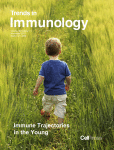
Chen, Y.Y.
Trends in Immunology. 2015;36(11):667-669.
Fulltext Options
View on External Site http://www.sciencedirect.com/science/article/pii/S1471490615002185Recent advances in T-cell therapy for cancer, viral infections, and autoimmune diseases highlight the broad therapeutic potential of T-cell engineering. However, site-specific genetic manipulation in primary human T cells remains challenging. Two recent studies describe efficient genome editing in T cells using CRISPR and TALEN approaches.
BibTeX
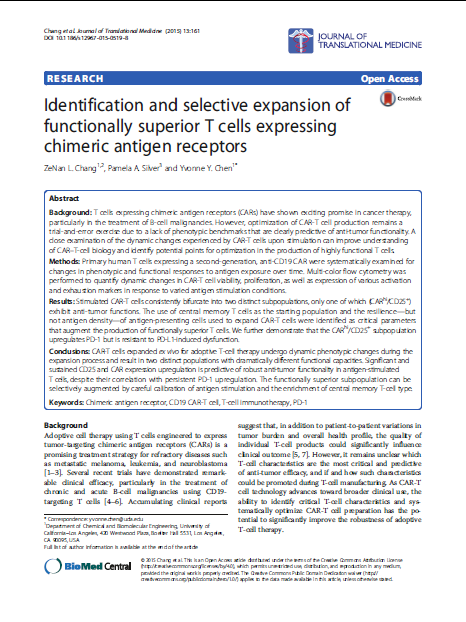
Chang, Z., Silver, P.A., Chen, Y.Y.
Journal of Translational Medicine. 2015;13(1):161.
Fulltext Options
View on External Site http://www.translational-medicine.com/content/13/1/161/Background: T cells expressing chimeric antigen receptors (CARs) have shown exciting promise in cancer therapy, particularly in the treatment of B-cell malignancies. However, optimization of CAR-T cell production remains a trial-and-error exercise due to a lack of phenotypic benchmarks that are clearly predictive of anti-tumor functionality. A close examination of the dynamic changes experienced by CAR-T cells upon stimulation can improve understanding of CAR–T-cell biology and identify potential points for optimization in the production of highly functional T cells.
Methods: Primary human T cells expressing a second-generation, anti-CD19 CAR were systematically examined for changes in phenotypic and functional responses to antigen exposure over time. Multi-color flow cytometry was performed to quantify dynamic changes in CAR-T cell viability, proliferation, as well as expression of various activation and exhaustion markers in response to varied antigen stimulation conditions.
Results: Stimulated CAR-T cells consistently bifurcate into two distinct subpopulations, only one of which (CARhi/CD25+) exhibit anti-tumor functions. The use of central memory T cells as the starting population and the resilience—but not antigen density—of antigen-presenting cells used to expand CAR-T cells were identified as critical parameters that augment the production of functionally superior T cells. We further demonstrate that the CARhi/CD25+ subpopulation upregulates PD-1 but is resistant to PD-L1-induced dysfunction.
Conclusions: CAR-T cells expanded ex vivo for adoptive T-cell therapy undergo dynamic phenotypic changes during the expansion process and result in two distinct populations with dramatically different functional capacities. Significant and sustained CD25 and CAR expression upregulation is predictive of robust anti-tumor functionality in antigen-stimulated T cells, despite their correlation with persistent PD-1 upregulation. The functionally superior subpopulation can be selectively augmented by careful calibration of antigen stimulation and the enrichment of central memory T-cell type.
BibTeX
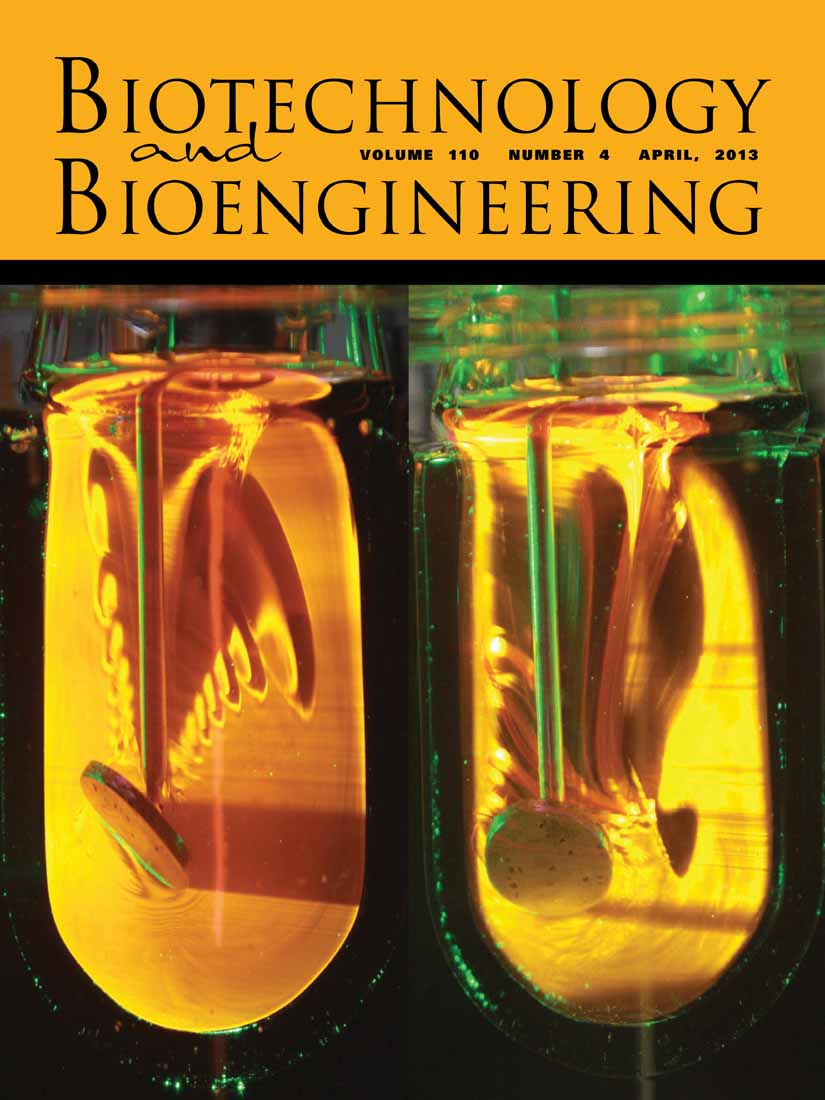
Wei, K.Y., Chen, Y.Y., Smolke, C.D.
Biotechnology and Bioengineering. 2013;110(4):1201-10.
Fulltext Options
View on External Site http://onlinelibrary.wiley.com/doi/10.1002/bit.24792/fullProgramming genetic circuits in mammalian cells requires flexible, tunable, and user-tailored gene-control systems. However, most existing control systems are either mechanistically specific for microbial organisms or must be laboriously re-engineered to function in mammalian cells. Here, we demonstrate a ribozyme-based device platform that can be directly transported from yeast to mammalian cells in a "plug-and-play" manner. Ribozyme switches previously prototyped in yeast are shown to regulate gene expression in a predictable, ligand-responsive manner in human HEK 293, HeLa, and U2OS cell lines without any change to device sequence nor further optimization. The ribozyme-based devices, which exhibit activation ratios comparable to the best RNA-based regulatory devices demonstrated in mammalian cells to-date, retain their prescribed functions (ON or OFF switch), tunability of regulatory stringency, and responsiveness to different small-molecule inputs in mammalian hosts. Furthermore, we observe strong correlations of device performance between yeast and all mammalian cell lines tested (R(2) = 0.63-0.97). Our unique device architecture can therefore act as a rapid prototyping platform (RPP) based on a yeast chassis, providing a well-developed and genetically tractable system that supports rapid and high-throughput screens for generating gene-controllers with a broad range of functions in mammalian cells. This platform will accelerate development of mammalian gene-controllers for diverse applications, including cell-based therapeutics and cell-fate reprogramming.
BibTeX
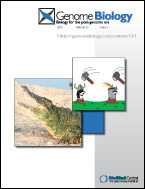
Chen, Y.Y.*, Galloway, K.E.*, Smolke, C.D.
Genome Biology. 2012;13(2):240. *These authors contributed equally.
Fulltext Options
View on External Site http://genomebiology.com/content/13/2/240Advances in synthetic biology are contributing to diverse research areas, from basic biology to biomanufacturing and disease therapy. We discuss the theoretical foundation, applications, and potential of this emerging field.
BibTeX
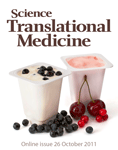
Chen, Y.Y. & Smolke, C.D.
Science Translational Medicine. 2011;3(106):106ps42.
Fulltext Options
View on External Site http://www.ncbi.nlm.nih.gov/pmc/articles/PMC3285276/Synthetic biology aims to make biological engineering more scalable and predictable, lowering the cost and facilitating the translation of synthetic biological systems to practical applications. Increasingly sophisticated, rationally designed synthetic systems that are capable of complex functions pave the way to translational applications, including disease diagnostics and targeted therapeutics. Here, we provide an overview of recent developments in synthetic biology in the context of translational research and discuss challenges at the interface between synthetic biology and clinical medicine.
BibTeX
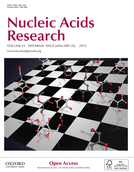
Beisel, C.L., Chen, Y.Y., Culler, S.J., Hoff, K.G., & Smolke, C.D.
Nucleic Acids Research. 2011;39(7):2981-94.
Fulltext Options
View on External Site http://nar.oxfordjournals.org/content/39/7/2981.longMicroRNAs (miRNAs) are prevalent regulatory RNAs that mediate gene silencing and play key roles in diverse cellular processes. While synthetic RNA-based regulatory systems that integrate regulatory and sensing functions have been demonstrated, the lack of detail on miRNA structure-function relationships has limited the development of integrated control systems based on miRNA silencing. Using an elucidated relationship between Drosha processing and the single-stranded nature of the miRNA basal segments, we developed a strategy for designing ligand-responsive miRNAs. We demonstrate that ligand binding to an aptamer integrated into the miRNA basal segments inhibits Drosha processing, resulting in titratable control over gene silencing. The generality of this control strategy was shown for three aptamer-small molecule ligand pairs. The platform can be extended to the design of synthetic miRNAs clusters, cis-acting miRNAs and self-targeting miRNAs that act both in cis and trans, enabling fine-tuning of the regulatory strength and dynamics. The ability of our ligand-responsive miRNA platform to respond to user-defined inputs, undergo regulatory performance tuning and display scalable combinatorial control schemes will help advance applications in biological research and applied medicine.
BibTeX
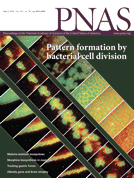
Chen, Y.Y., Jensen, M.C., & Smolke, C.D.
Proceedings of the National Academy of Sciences. 2010;107(19):8531-6.
Fulltext Options
View on External Site http://www.pnas.org/content/107/19/8531.longRNA molecules perform diverse regulatory functions in natural biological systems, and numerous synthetic RNA-based control devices that integrate sensing and gene-regulatory functions have been demonstrated, predominantly in bacteria and yeast. Despite potential advantages of RNA-based genetic control strategies in clinical applications, there has been limited success in extending engineered RNA devices to mammalian gene-expression control and no example of their application to functional response regulation in mammalian systems. Here we describe a synthetic RNA-based regulatory system and its application in advancing cellular therapies by linking rationally designed, drug-responsive, ribozyme-based regulatory devices to growth cytokine targets to control mouse and primary human T-cell proliferation. We further demonstrate the ability of our synthetic controllers to effectively modulate T-cell growth rate in response to drug input in vivo. Our RNA-based regulatory system exhibits unique properties critical for translation to therapeutic applications, including adaptability to diverse ligand inputs and regulatory targets, tunable regulatory stringency, and rapid response to input availability. By providing tight gene-expression control with customizable ligand inputs, RNA-based regulatory systems can greatly improve cellular therapies and advance broad applications in health and medicine.
BibTeX
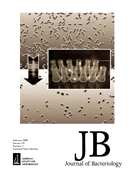
Jewett, M.C., Miller, M.L., Chen, Y.Y., & Swartz, J.R.
Journal of Bacteriology. 2009;191(3):1083-91.
Fulltext Options
View on External Site http://jb.asm.org/content/191/3/1083.longOne of biology's critical ironies is the need to adapt to periods of energy limitation by using the energy-intensive process of protein synthesis. Although previous work has identified the individual energy-requiring steps in protein synthesis, we still lack an understanding of the dependence of protein biosynthesis rates on [ATP] and [GTP]. Here, we used an integrated Escherichia coli cell-free platform that mimics the intracellular, energy-limited environment to show that protein synthesis rates are governed by simple Michaelis-Menten dependence on [ATP] and [GTP] (K(m)(ATP), 27 +/- 4 microM; K(m)(GTP), 14 +/- 2 microM). Although the system-level GTP affinity agrees well with the individual affinities of the GTP-dependent translation factors, the system-level K(m)(ATP) is unexpectedly low. Especially under starvation conditions, when energy sources are limited, cells need to replace catalysts that become inactive and to produce new catalysts in order to effectively adapt. Our results show how this crucial survival priority for synthesizing new proteins can be enforced after rapidly growing cells encounter energy limitation. A diminished energy supply can be rationed based on the relative ATP and GTP affinities, and, since these affinities for protein synthesis are high, the cells can adapt with substantial changes in protein composition. Furthermore, our work suggests that characterization of individual enzymes may not always predict the performance of multicomponent systems with complex interdependencies. We anticipate that cell-free studies in which complex metabolic systems are activated will be valuable tools for elucidating the behavior of such systems.
BibTeX










































